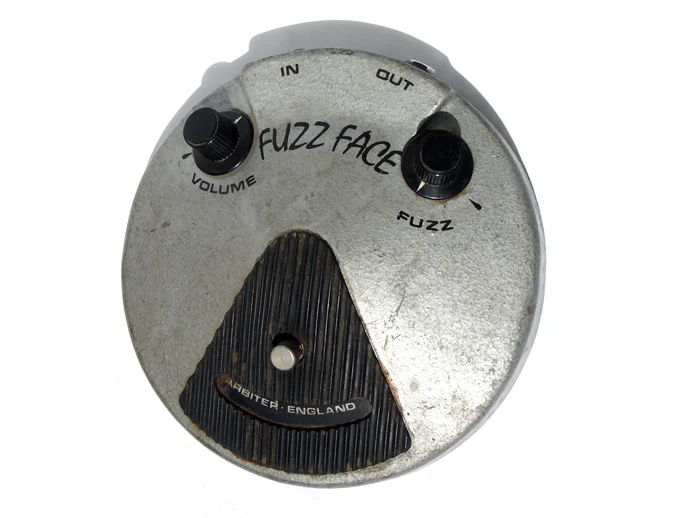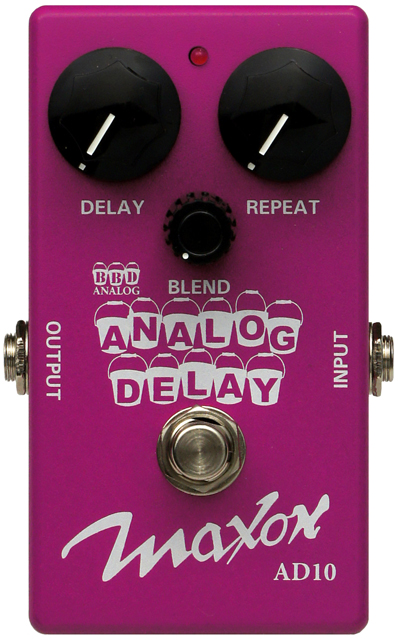Learn How to Arrange Your Pedal Board Correctly With This Strategy
So, you've probably made a few strides in your playing lately: jamming with a group of friends on a regular basis, maybe playing out a few times, and checking out the rigs of other guitar players when you go to shows. You start truly hearing the difference in tone between solid state amps and tube amps. You learn about David Gilmour's affection for a fuzz pedal called the Big Muff. And maybe even Frank Zappa's random arpeggiator on 'The Deathless Horsie', or what a Univibe is.
Your playing has been improving, your gear is improving, and now the question is posited:
Does it matter what order these things go in?
On one hand, nah.
You do you. Experiment with stuff.
An unorthodox approach to music is often what makes the players we all love stand out, and is largely why we love their music.
Now, that having been said, there are certainly some guidelines someone can start with to eliminate some of the guesswork.
Think of it like this: try ordering the signal of your effects as they would naturally occur in a room where you were playing your guitar through an amp with no effects.
1.) There are things that the guitar can do to the sounds in the pickups and potentiometers: Filter Effects.
2.) There are things that can happen in the amplifier that can change the sound: Gain Effects.
3.) Things that can happen in the room to change the sound: Time Effects.
Since the signal goes from the guitar, to the amp, to the room; place effects pedals in that same order as you go from guitar to amp: Filter, gain, time.
Filter Effects
What is a filter effect? Inside your tone knobs are potentiometers that roll off the higher frequencies (if you haven't started using them, try messing around with them). A wah pedal is a tone pot with wider parameters than the one in your guitar. An envelope filter is a very complex circuit, but obviously, a type of filter.
Compressors are one of those fun grey areas where different guitar players will put them in different places in their signal chain with different results, that can really be interesting to experiment with. But, the nature of cutting the highs and lows while boosting the overall signal is, on paper, still a filter.
Due to the similar swirly nature of the sound, phasers are often grouped with chorus pedals and flangers towards the end of a signal. However, your phaser will really come to life by putting towards the front. Think of it like this: one of the classic Telecaster tones is having both pickups on at the same time. With one pickup close to the bridge, where the strings are more taut and an at a narrower point of the elliptical shape that they take while vibrating; and the other pickup closer to the middle of the string where the ellipse is wider; the two slightly different wave forms of the same tone create a unique sound people called 'out of phase'. The phaser pedal takes this event, which can occur inside of a guitar, and augments it. The Univibe is very similar to a phaser, and also typically sounds better early in the signal.
What to put first in terms of different filter effects is also a lot of fun. 'Do I want my wah wah to be phased, or the phase to be wah-ed?'. I personally prefer the wah or envelope filter first, though I used a Univibe clone for a while which had to go first because of its size and a lack of real estate. I never found a place in my chain where I liked what a compressor did, but some guitar players swear by them.
Gain Effects
So your guitar has done what it's done to the signal, and now it's heading to the amplifier. This family of effects is relatively simple: clean boosts, overdrives, fuzz, and distortion.
The earliest amplifiers ran on vacuum tube technology. When those amps were run at their maximum volume for an extended period of time, they would get hot and go into a state of what was called overdrive. Overdrive pedals, the Ibanez Tube Screamer being a holy grail of sorts among them, mimic that sound without risking tinnitus (in theory).
Fuzz pedals were the first form of distortion to come out, meant to mimic the fullness and sustain that a saxophone was able to get. As technology advanced, more and more distortion was achieved, resulting in the types of pedals you often see on guitar players who play hard rock and metal.
The clean boost is relatively simple (and from what I understand, a relatively simple circuit as well), it takes your clean sound and augments it; making the clean tone solos of players like Mark Knopfler and Jerry Garcia easy to achieve.
In my experience, I've found putting gain effects in order of low to high to be a successful approach. For me, I go clean boost followed by low gain overdrive, and then high gain overdrive. That way, you can use the clean boost to further boost the low gain, resulting in a very creamy, sustain laden overdrive. The low gain drive can further boost the high gain drive for creaminess and sustain without going into an edgy distorted tone.
And all three on when the drummer is really hitting hard at the big climatic point of your guitar solo.
Time Effects
So once your guitar has created the tones and the amp has manipulated it, it goes off into the world to be heard. If you're playing in a large, empty hall, you'll hear the sounds reverberating around you, aka: reverb. If you're playing in the EnormoDome, you'll hear echoes of the guitar tones off in the distance: delay.
If you're playing your guitar part note-for-note along with 4 other guitar players, there will be barely perceptible variations in the timing and how in tune you all are, this sound is recreated in a chorus pedal. It's also a lot cheaper than hiring 4 other guitar players. Andy Summers, guitarist for the Police, was a fan of this sound; and used it on such tunes as Walking on the Moon and Message in a Bottle
When you take an audio cassette and insert it into a stereo, the two nodes sticking out that spin the tape around are called flanges. If you have two stereos playing the exact same tape at the exact same time, and then take your finger and stop the flange from spinning, you'll hear what in the effects pedal world is called flanging; the pedal is called a flanger. You can hear flanging towards the end of Life in the Fast Lane by the Eagles (one of my top ten least favorite bands).
I would do this as a kid when MTV would play a song that I owned a copy of (yes, when I was a kid there was no internet and MTV still played videos), and put the song on my stereo and play it just a hair behind where it was playing on the TV. It definitely sounds cool.
So, there you have it: filter effects, gain effects, and time effects.
Or, a simpler way to remember it is: things that would occur naturally in the guitar, then things that would occur naturally in the amp, followed by things that would naturally occur in the room.
Adam Douglass has been playing guitar for 25 years and teaching for a good 20. He currently resides in Brooklyn, New York where he is an instructor; and plays with his band doing his original music, jazz standards, or whatever other gigs might come his way. His guitar of choice is the Fender Stratocaster, though if money were no object he'd have 3 or 4 of everything. He prefers tube screamer-like overdrives and clean boosts, with touch of analog delay. Hit him up at info@adamdouglass.com, as he is always happy to discuss interesting topics.














Get noodly, but don't get soupy.